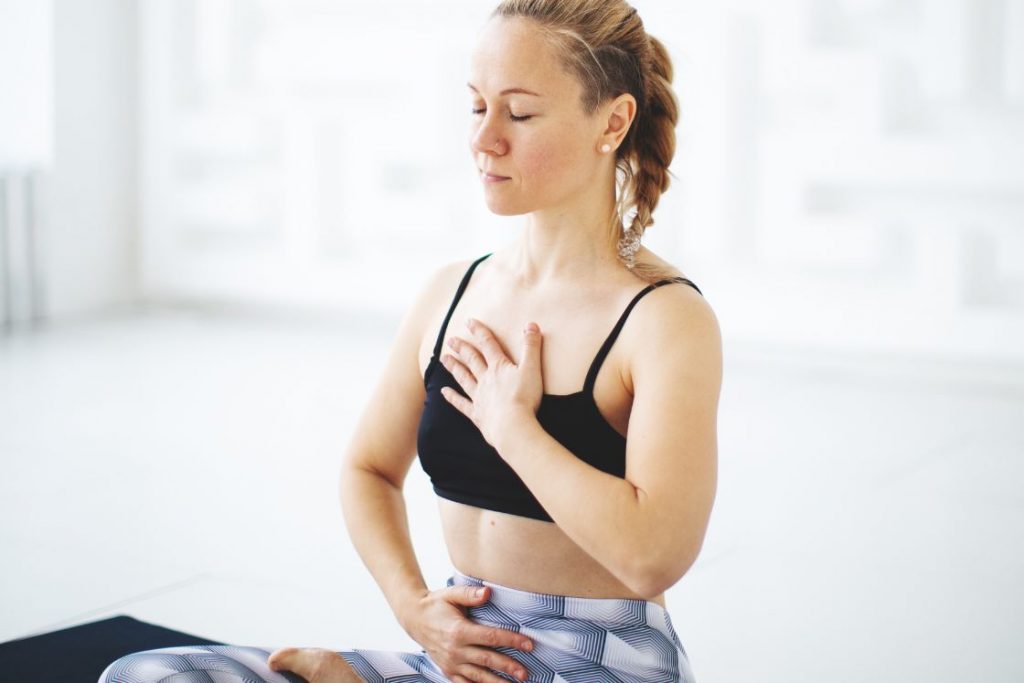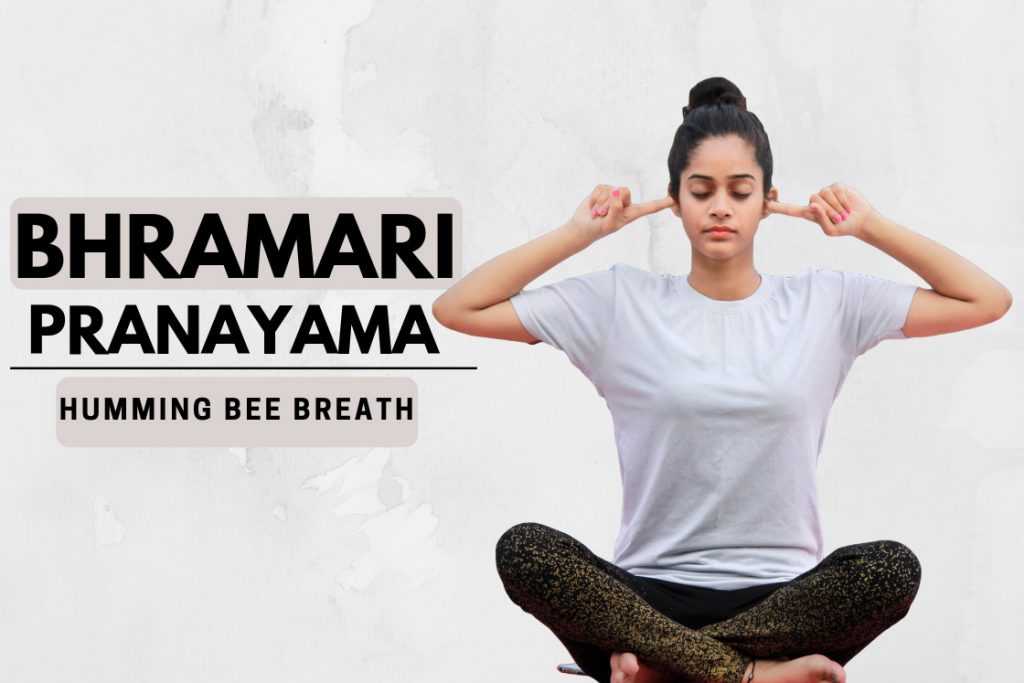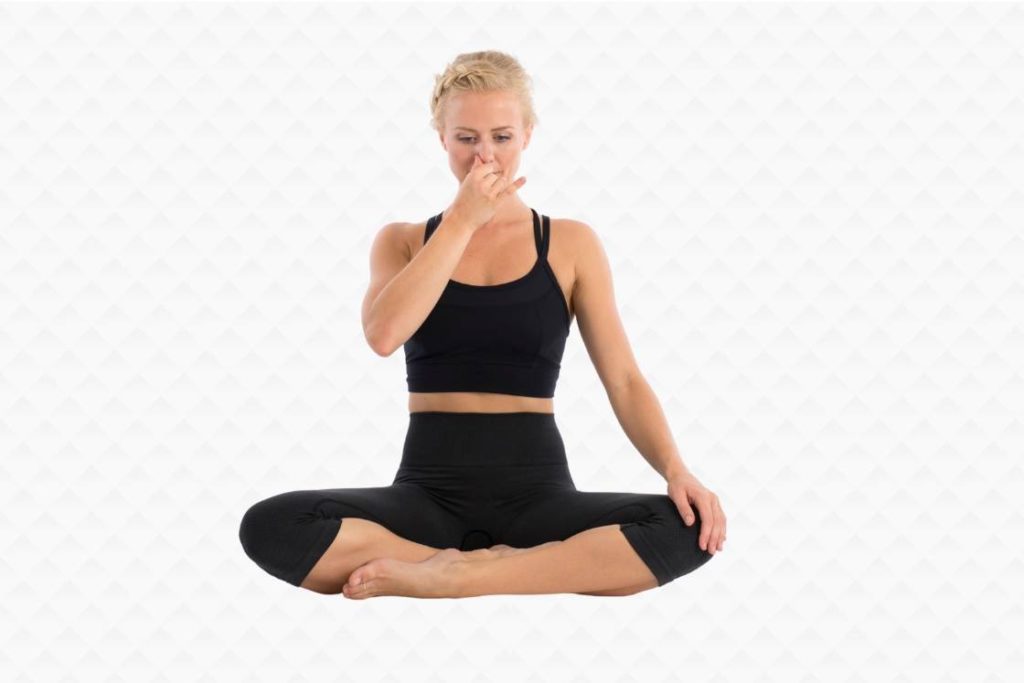
High blood pressure has become common in all age groups today. Teenagers, adults, and older people are equally affected. Most cases arise from daily habits such as unhealthy food choices, lack of movement, high stress, and disturbed sleep. When blood pressure stays high for a long time, it increases the risk of heart disease and stroke.
Yoga offers a natural way to manage high blood pressure. It supports regular movement, helps maintain a healthy weight, and reduces stress. Within yoga, pranayama is especially helpful. This breathing practice calms the mind, steadies the heart rate, and improves lung capacity, which together help bring blood pressure back to a healthier range.
In this article, you will learn which pranayama techniques are useful for high blood pressure, how they work, and which breathing practices should be avoided in hypertension.
What is high blood pressure?
High blood pressure, or hypertension, is when the pressure of blood flowing through your arteries stays higher than the normal range. To understand this, it helps to know what blood pressure actually means.
Blood pressure is the force of blood pushing against the walls of your arteries. It is measured using two numbers:
- Systolic pressure: the first number, showing the pressure in your arteries when the heart beats.
- Diastolic pressure: the second number, showing the pressure when the heart rests between beats.
A reading of one hundred twenty over eighty is written as 120/80 mmHg. This is considered a normal blood pressure level.
When these numbers rise above the healthy range on a regular basis, it is called high blood pressure. “120/80 mmHg” if the measurement was 120 systolic and 80 diastolic.
Symptoms of high blood pressure
Most people with high blood pressure do not notice any symptoms, even when their readings are very high. Hypertension can stay hidden for years, which is why it is often called the silent killer.
In some cases, a few signs may appear, such as:
- Headaches
- Shortness of breath
- Nosebleeds
- Excess sweating
- Facial flushing
These symptoms usually show up only when blood pressure becomes seriously high or reaches a dangerous level. Waiting for visible signs can be risky, as the condition may already be harming vital organs.
The safest approach is to check your blood pressure regularly. You can monitor it at home with a BP machine or visit a healthcare professional to keep your readings in a healthy range.ck.
Problems due to high blood pressure
When blood pressure stays high for a long time, it causes continuous strain on the artery walls. This pressure weakens blood vessels and affects the flow of blood to important organs. Over time, the heart, brain, kidneys, and eyes may suffer serious damage.
Uncontrolled high blood pressure can lead to complications such as:
- Heart attack, heart failure, heart disease, or stroke
- Aneurysm
- Chest pain
- Chronic kidney disease
- Damage to the blood vessels in the eyes
- Metabolic syndrome
- Reduced memory and thinking abilities
- Dementia
These conditions develop gradually, which is why managing blood pressure early is essential for long term health.
How pranayama helps in lowering high blood pressure?

One of the main reasons pranayama is effective for high blood pressure is its influence on the parasympathetic nervous system. This system is responsible for rest and relaxation.
When you practise slow and steady breathing, the parasympathetic system becomes active. It sends calming signals to the brain, lowers the heart rate, and relaxes the blood vessels. As the blood vessels widen, blood flows more easily through the arteries, which helps bring down high blood pressure.
Breath and heart function are closely connected. When you consciously control your breathing, the cardiovascular system also responds. Different pranayama techniques create gentle changes in heart rhythm and chest pressure, which support healthier blood pressure levels.
Pranayama also improves oxygen delivery, removes stale air from the lungs, and reduces stress. These effects promote better sleep, increase mindfulness, and create a relaxed internal state, all of which contribute to lower blood pressure.
Pranayama for high blood pressure
If you have high blood pressure, always consult a medical professional before starting new practices. After proper guidance, pranayama can be a safe and supportive method. Learning from an experienced yoga teacher ensures your technique is correct and comfortable.
Below are the best pranayama exercises for high blood pressure.
The best pranayama techniques for high blood pressure are Bhramari, Nadi Shodhana, Chandra Bhedana, and Sitali. These exercises calm the nervous system, slow the heart rate, and relax the blood vessels, which helps lower blood pressure naturally.
1. Bhramari Pranayama (Humming Bee Breath)

Bhramari Pranayama is also known as “Humming Bee Breath” because the humming sound we make when practising sounds like the buzzing of a bee. By creating internal vibrations, this pranayama deeply unwinds the body and brain. It lowers blood pressure and eases tension and anxiety.
According to research from 2010, doing Bhramari pranayama at a slow breathing rate of three breaths per minute for five minutes can lower high blood pressure and cause a small drop in heart rate (2-3 beats). Additionally, it helps pregnant women avoid pre-eclampsia.
Another study in 2022 determined that simple Bhramari Pranayama dramatically lowered blood pressure and pulse rate in both hypertensive and normotensive volunteers within minutes of using it.
Steps to perform
- Sit in your preferred meditation position in a peaceful location on a comfortable surface.
- Maintain a comfortable straight back and a spine-aligned head position.
- Put your index fingers on the tragus, the projecting cartilage on the exterior of the ear, to partially shut the ear. You can fold the remaining fingers within your palm.
- Breathe in via your nose.
- Close your ears by pushing the cartilage inwards, slightly tuck in your chin (jalandhara bandha), and exhale while creating a “hmmmmm” sound at the back of your throat.
- Repeat for 5-7 minutes.
2. Nadi Shodhana (Alternate Nostril Breathing)

To purify the Nadis from all pollutants, Nadi Shodhana is a purifying pranayama breathing technique. Deep breathing in this pranayama enhances blood circulation throughout the body, allowing the muscles, lungs, heart, and other organs to work optimally. It strengthens your lungs and restores your nervous system. High blood pressure, asthma, and migraines can all be effectively treated with it.
Steps to perform
- Sit comfortably for meditation, trying to keep your back as straight as you can. If sitting on the floor bothers you, you can sit on a cushion, a folded blanket, or a chair.
- Put your left hand in the Gyan mudra position on your thigh. Your right hand should be brought up close to your face.
- Fold the index and middle fingers while placing the thumb on the right nostril. Place the ring and little finger close to the left nostril. To open and close the nostrils, the thumb, ring, and little finger will function as lids.
- For a few seconds, breathe normally to steady your breath.
- Breathe in via your right nostril while closing your left nostril with your ring finger.
- Breathe out entirely while opening your left nostril.
- Inhale while keeping the left nostril open and keeping your right nostril closed with your thumb. Release the thumb from the right nostril and completely exhale via the right nostril.
- This completes one round of nadi shodhana.
- Practice at least 2-3 rounds.
3. Chandra Bhedana Pranayama (Left Nostril Breathing)

Air is inhaled through the left nostril and exhaled through the right nostril during Chandra Bhedana Pranayama, a yoga breathing practice used to cool the body and mind. It is a type of uni-nostril breathing in which inhaling and exhalation are restricted to the left and right nostrils.
Chandra bhedana pranayama cools down the body which stimulates the vagus nerve, resulting in the activation of the parasympathetic nervous system which lowers heart rate and dilates blood vessels. The parasympathetic nervous system, which lowers heart rate and dilates blood vessels, is activated by Chandra Bhedi Pranayama’s slow, deep breathing which, consequently, lowers overall blood pressure.
Steps to perform
- Sit comfortably for meditation, trying to keep your back as straight as you can.
- Put your left hand in the Gyan mudra position on your thigh. Your right hand should be brought up close to your face.
- Fold the index and middle fingers while placing the thumb on the right nostril. Place the ring and little finger close to the left nostril.
- For a few seconds, breathe normally to steady your breath.
- Close your right nostril with your thumb and breathe in via your left nostril.
- Breathe out entirely from the right nostril while closing your left nostril.
- This completes one round of the pranayama.
- Repeat the process 3-5 times.
4. Sitali Pranayama (Cooling Breath)

Sitali pranayama is another cooling breathing technique helpful in lowering tension and anxiety, controlling blood pressure, and promoting a calm and tranquil mind.
In 2020, research published its finding noting that in patients with hypertension, sitali pranayama significantly lowers blood pressure and improves heart rate variability. Thus, for the effective management of hypertension, sitali pranayama could be used in addition to conventional medicine.
Steps to perform
- Sit comfortably for meditation, trying to keep your back as straight as you can. If sitting on the floor bothers you, you can sit on a cushion, a folded blanket, or a chair.
- Open your mouth and take three deep breaths while exhaling through your nose to regulate your breathing.
- As though holding a straw, make an “O” shape with your mouth.
- You should have your tongue curved at the sides and slightly extending from your mouth. In the event that you can’t roll it, it can also stay flat.
- Inhale deeply and allow the chilly air to run through your mouth and throat as if you were sipping through a straw.
- To let the warm air out, slowly exhale through your nose while keeping your lips closed and your tongue within.
- Practice this pranayama for 2-3 minutes.
Which pranayama is not good for high blood pressure?
Some breathing techniques increase the breath rate and put pressure on the nervous system. These should be avoided in hypertension:
Both involve fast, forceful exhalations that push out more carbon dioxide and increase oxygen intake. This can narrow the blood vessels and raise blood pressure.
If you wish to practise these techniques, do so only with a trained yoga teacher and at a slow pace..
How often should you practise pranayama
For best results, practise pranayama for five to ten minutes each day. Morning or evening is ideal when the mind is calm. Always practise gently and stop if you feel discomfort.
Pranayama and suitability for high blood pressure
| Pranayama | Effect on Body | Suitable for High BP |
|---|---|---|
| Bhramari | Calms mind and lowers heart rate | Yes |
| Nadi Shodhana | Balances nervous system | Yes |
| Chandra Bhedana | Cooling and relaxing | Yes |
| Sitali | Reduces heat and stress | Yes |
| Kapalbhati | Fast and forceful breathing | No |
| Bhastrika | Strong stimulating breaths | No |
Conclusion
High blood pressure can be managed well when you stay aware and take the right steps. Regular check ups, home monitoring, healthy eating, and mindful breathing all support better heart health. Practising pranayama each day can help relax the mind, improve circulation, and keep your blood pressure in a healthier range.